RARE! WWII Original MINT CONDITION Kiri Leaflet Aleutian Islands Japanese (COA)
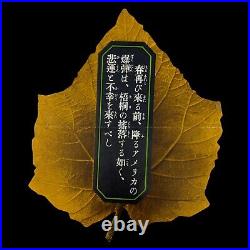
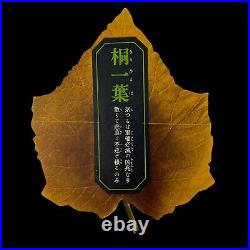
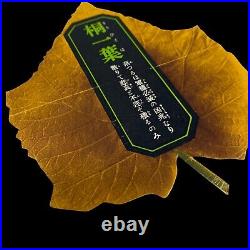
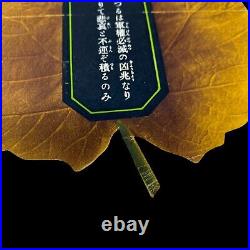
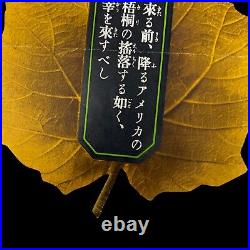
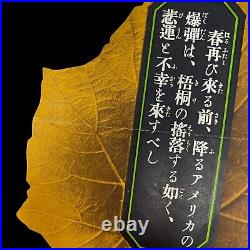
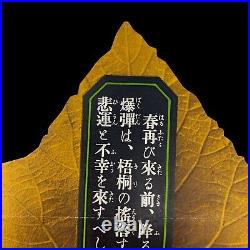
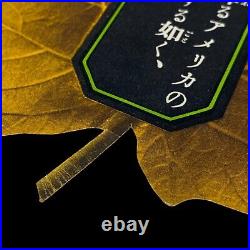
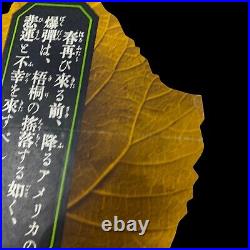
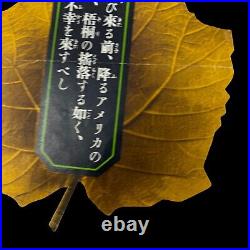
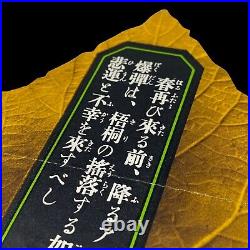
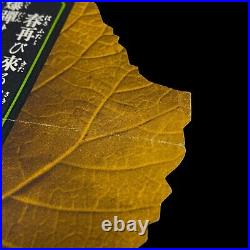
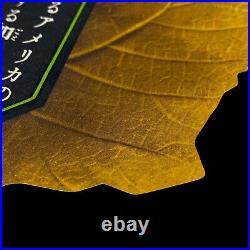
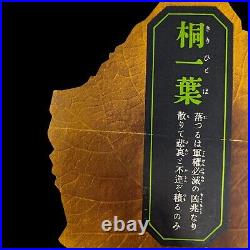
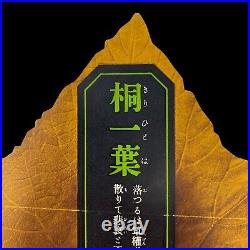
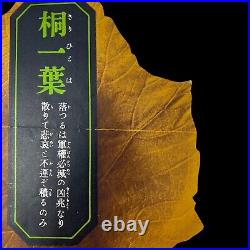
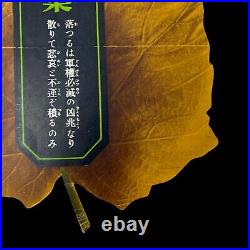
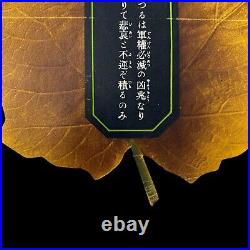
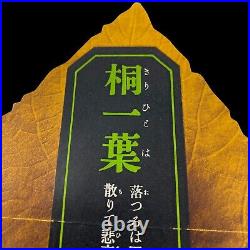
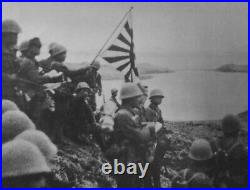

Comes with a hand-signed C. This museum-grade WWII double-sided leaflet is an extremely rare MINT CONDITION "Kiri Leaflet" that was dropped by American forces over Japanese positions during WWII. What makes this leaflet so rare is that it is very well documented as to when these were dropped as the very realistic leaf "leaflet" was a very symbolic bad omen for the Japanese.
There were two versions of this rare leaflet WHITE and BLACK. This black version was dropped on the Aleutian Islands, Kiska, North Burma, and was the exact leaflet that was intended for the Doolittle raiders to drop over Tokyo in April 1942, but was never used.
Becaue of the very delicate cut and nature of this leaflet is it nearly impossible to find on in intact or mint condition like this. The United States prepared and dropped a very realistic-looking "kiri" tree leaflet on the Japanese in 1943 and 1944.The Kiri tree is known as Royal Paulownia. It is native to the Orient. It is also called the Chinese Empress tree and the Princess tree.
The early fall of the kiri tree leaves is considered a bad omen in Japan. According to one official U. Document the translation of the front and back of the leaflets is.A falling Paulownia leaf is the unlucky omen of the inevitable destruction of the military power of Japan. As these leaves scatter about they do nothing but pile up sorrow and bad luck. Before spring comes a second time, American bombs, falling like Paulownias falling from far away, will bring disaster and bad luck.
The American Air Force dropped the leaflets in a number of locations. A New Delhi newspaper mentions. Planes shower'Leaf of Death' on Jap Troops. The'leaf of death' is falling in North Burma, dropped by Allied planes. This is a reproduction of the kiri leaf, which appears in a famous Japanese drama as a symbol of death Note: "The Kiri Leaves Fall" is the name of a famous Japanese play by Tsubouchi Shoyo.
At the end of the play, kiri leaves fall, symbolizing the end of hopes of the main characters that had tried to seize power. With the'leaf of death', the Allied planes are dropping imitations of Japanese newspapers reporting the fall of Japanese strongholds and the expulsion of the Japs from 1,000 square miles of Burmese territory. These'leaves' are falling as the British open their attack on the Japs on the Imphal-Tiddim road, along which the main enemy effort against India is directed. The kiri leaflet was also dropped on Japanese troops in the Aleutian Islands.
In June 1942, Japanese forces occupied the islands of Attu, Agattu, and Kiska. Attu was recaptured by the U.
Army Seventh Infantry Division in May 1943. The battle to reclaim Attu lasted three weeks. 2,351 Japanese soldiers were found dead; only 28 surrendered. 549 out of 15,000 US soldiers were killed; 1,100 were wounded.
60,000 of the kiri leaflets were dropped over Attu and Kiska before troops landed on Attu in May 1943. The American Air Force regularly bombed and leafleted the Japanese garrisons. The Eleventh Air Force bombers frequently mixed leaflets with the bombs they dropped on Kiska after August 1942. Later, when the Japanese reoccupied Attu, bombers delivered small quantities of leaflets there also.
According to my old friend Tom Mahoney writing in American Legion Magazine, May 1966. The leaflet was first intended for the Doolittle raiders to drop over Tokyo in April 1942, but was never used. A sailor mentions in correspondence that he received a kiri leaflet from a pilot. It was given to him while he was in the Aleutian Islands, at the Cold Bay Naval Air Station.
He says a pilot came in one day with a stack of leaflets, and said something like, this is what we're dropping on the Japanese these days. He does not remember the exact date. However, he was stationed at Cold Bay from July 1943 through January 1944. Army Engineers under the command of Col. Talley began the construction of the air base, soon to be called Fort Randall, in early 1942. The Eleventh Air Force, commanded by Brig. Butler consisted of 10 heavy and 34 medium bombers and 95 fighters, divided between its main base, Elmendorf Airfield, in Anchorage, and at airfields at Cold Bay and on Umnak. Cold Bay was also used by the Navy and the Attu attack force sailed from there on 11 May, 1943.The color of the leaflet is an autumn brown and the text is in a black or a white tablet surrounded by a green border in the center of the leaf. A second translation of the text on the front and back of the leaflet is. Its fall is the ill omen of the inevitable downfall of militarism. With the fall of one kiri leaf come sadness and bad luck.
Text on the back of the leaflet is. Before fall comes again the raining bombs of America, just like the kiri leave fluttering to the ground, will bring sad fate and misfortune. Infantryman Bernard Bergmann picked up some of the leaflets in Gertrude's Cove at the south end of Kiska one day after the invasion of the island. The leaves are die cut and each one bears in natural color the likeness of a real kiri leaf.
The LIFE magazine of 9 July 1945 mentioned the Kiri Leaflet in an article titled Leaflets Dropped on the Home Islands Attack Nippon's Militarist Caste. Last week Japanese civilians were told that they must help defend the Japanese home islands when the Americans invade and were warned they must not allow themselves to be taken prisoner or die dishonorable deaths. If obeyed, the order to commit suicide rather than surrender would produce a terrifying holocaust.
The Americans are trying to crack the core of this credo by deluging Japan with propaganda leaflets and broadcasts. Recognizing the fanatical devotion of the average Japanese to the emperor, the propaganda tries to drive a wedge between the civilians and the military caste, on Gumbatsu. Leaflets showing that the Gumbatsu is chiefly responsible for the present sad state of the Japanese nation are lessons in Japanese history.They point out how members of the Gumbatsu, like Tojo sneaked into governmental control, usurped the foreign policy and finally pushed the country and the Emperor into a stupid, bloody and hopeless war. Along with factual leaflets, the Americans drop one shaped like a kiri leaf, which capitalizes on the peculiarly Japanese obsession with the poetry and omens of death. Every B-29 raid on Japan now drops about 750,000 pieces of propaganda. The disturbing effect on the home population is indicated by Radio Tokyo's angry bleats against antiwar sentiment. " The Japanese are urged to fight against the American leaflets with "strong nerves and warned of severe penalties for failing to turn in the leaflets at nearest police station.
